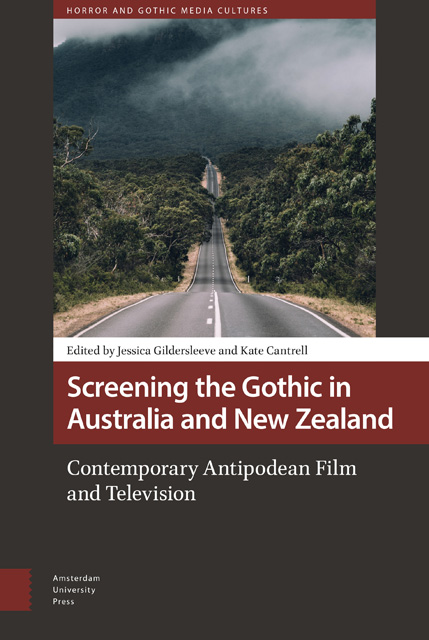5 - Glocalizing the Gothic in Twenty-First Century Australian Horror
Published online by Cambridge University Press: 24 November 2022
Summary
Abstract
The early twenty-first century saw the emergence of a transnational cycle of supernatural horror films with gothic themes and aesthetics, many of which featured uncanny child figures. Two Australian films that self-reflexively participated in this transnational cycle are Lake Mungo (2008) and The Babadook (2014). This chapter examines how these two Australian films contribute to this international Gothic horror cycle and related genre trends in ways that ‘localize’ globally resonant film genres. I argue that Lake Mungo and The Babadook integrate culturally specific media traditions and contexts with contemporary transnational film genre preoccupations in a self-consciously ‘glocal’ generic manoeuvre.
Keywords: glocalization; horror; Gothic; Lake Mungo; The Babadook
The turn of the twenty-first century saw the emergence of a transnational cycle of Gothic horror films preoccupied with uncanny child figures. As I have previously articulated (Balanzategui, Uncanny Child), this group of films includes now iconic Japanese horror films such as Ringu (Nakata, 1998) and Ju-on: The Grudge (Shimizu, 2002) as well as their Hollywood remakes, and Spanish films including the Spanish-produced English-language film The Others (Amenábar, 2001). As Keith McDonald and Wayne Johnson point out, transnational flows of cultural exchange underpin the genre mechanics of Gothic horror films in the twenty-first century, manifested as an ‘oscillation between established discourse of genre and […] counter discoursal responses’ which continues to be ‘invigorated by a heightened transnational ecology due to the increased effects of globalization in real world and artistic contexts’ (3). Similarly, Glennis Byron points to ‘increasing evidence of the emergence of cross-cultural and transnational gothics that called out for attention and which suggested that, despite the emergence of so many national and regional forms, in the late twentieth and early twenty-first centuries gothic was actually progressing far beyond being fixed in terms of any one geographically circumscribed mode’ (1). The transnational, transmillennial Gothic horror cycle I examine in The Uncanny Child in Transnational Cinema (2018) is one prominent example of these ‘transnational gothics’, and is a particularly self-aware example: this cycle of films deploys uncanny child characters to work through globally resonant fin de siècle anxieties about intersecting processes of cultural and technological change.
- Type
- Chapter
- Information
- Screening the Gothic in Australia and New ZealandContemporary Antipodean Film and Television, pp. 99 - 122Publisher: Amsterdam University PressPrint publication year: 2022

